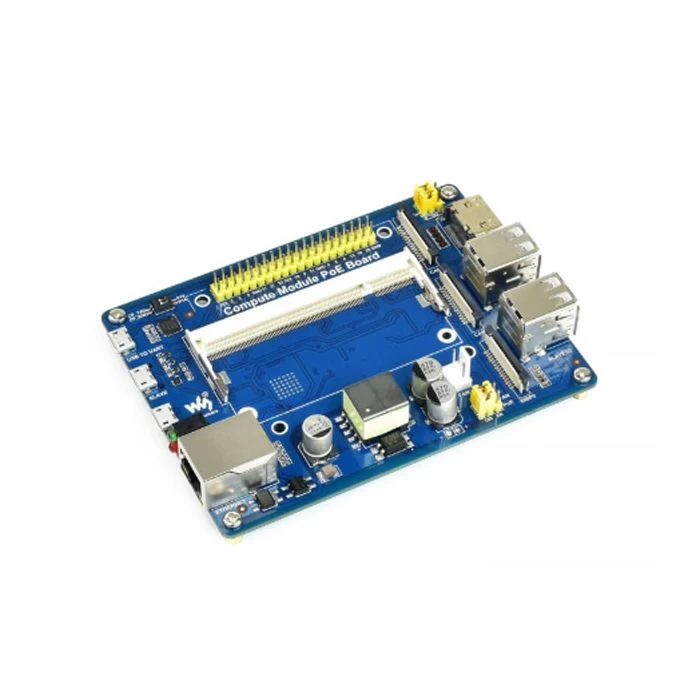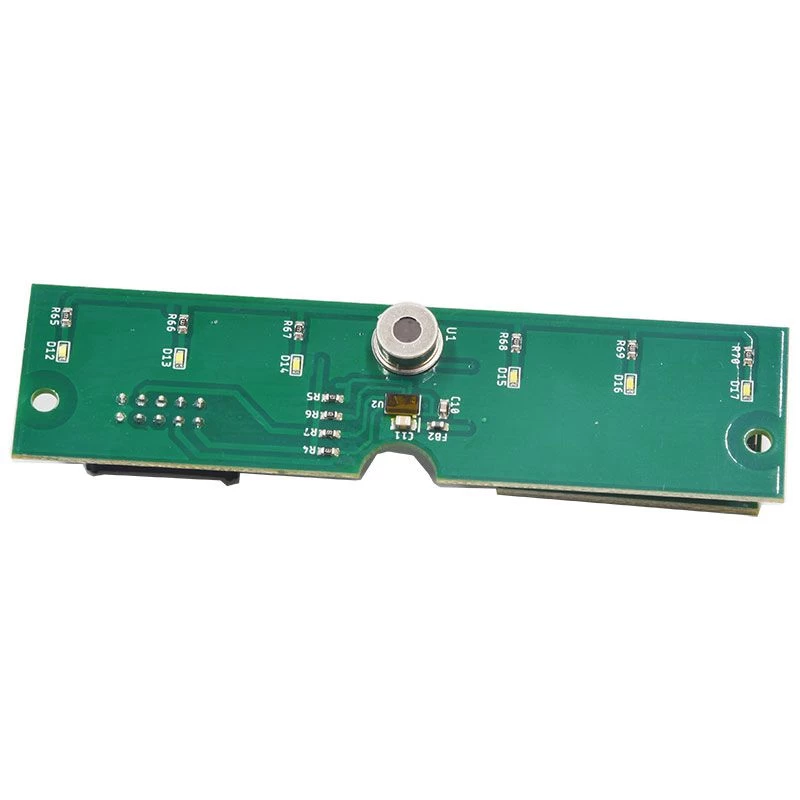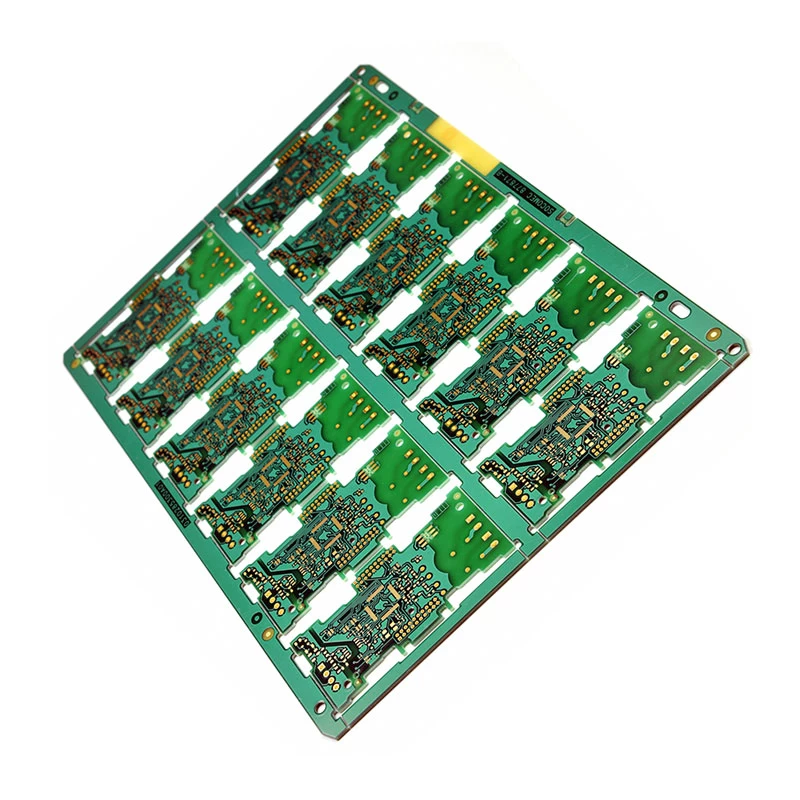Is there a difference between gold plating and silver plating on the PCB?
2018-05-30 15:37:04

Electronic fever network bear paw
Listen to the dynamics of the electronics industry and get to know the semiconductor industry
Today, Xiao Bian will introduce you to the PCB knowledge. If different colors of the PCB affect its performance, whether there is a difference between gold plating and silver plating on the PCB; the following will be elaborated for everyone.
Who is the noble PCB color secret
Many DIY players will find that the PCB colors used by various board products in the market are varied and dazzling. The more common PCB colors are black, green, blue, yellow, purple, red, and brown. Some manufacturers also developed PCBs with different colors such as white and pink ingenuity.
In the traditional impression, black PCBs seem to be positioned high-end, while red, yellow, etc. are low-end dedicated, is that not the case?
PCB copper layer without coating solder resist is easily oxidized when exposed to air
We know that both the front and back sides of the PCB are copper layers. In the production of PCBs, whether the copper layer is manufactured by additive or subtractive methods, it will eventually have a smooth, unprotected surface. Although the chemical properties of copper are not as active as aluminum, iron, and magnesium, the contact between pure copper and oxygen is easily oxidized in the presence of water. Because oxygen and water vapor are present in the air, the surface of pure copper is in contact with air. An oxidation reaction will occur soon. Because the thickness of the copper layer in the PCB is very thin, the oxidized copper will become a poor conductor of electricity, which will greatly impair the electrical performance of the entire PCB.
In order to prevent copper oxidation, and to separate the soldered and unsoldered parts of the PCB during soldering, and to protect the surface of the PCB, engineers invented a special coating. This paint can be easily painted on the surface of the PCB to form a protective layer with a certain thickness and to block the contact between copper and air. This coating is called a solder mask and the material used is a solder mask.
Since it is called paint, there must be different colors. It is true that the original solder mask can be made colorless and transparent, but the PCB needs to be printed on the board with small letters for maintenance and manufacturing convenience. The transparent solder mask paint can only reveal the background color of the PCB, so the appearance is not good enough, whether it is manufacturing, maintenance or sales. Therefore, engineers added various colors to the solder mask, and finally formed black or red and blue PCBs.
It is difficult to see the traces on the black PCB and it is difficult to repair.
From this point of view, the color of the PCB has nothing to do with the quality of the PCB. The difference between the black PCB and the blue PCB, the yellow PCB, and other color PCBs is the difference in the color of the solder resist on the final brush. If the PCB design and manufacturing process are exactly the same, the color will not have any impact on the performance, nor will it have any effect on the heat dissipation. Regarding the black PCB, it is almost invisible because it is covered almost completely by the surface layer traces, resulting in great difficulties for later maintenance. Therefore, it is a color that is not easy to manufacture and use. Therefore, in recent years, people have gradually reformed and abandoned the use of black solder mask paint instead of dark green, dark brown, dark blue and other solder resist paints. The purpose is to facilitate manufacturing and maintenance.
Having said this, everyone has basically understood the problem of PCB color. The reason why “colors represent high-grade or low-grade” is the reason that manufacturers prefer to use black PCBs to manufacture high-end products, and use red, blue, green, yellow, etc. to manufacture low-end products. To sum up, one sentence is: The product gives a color meaning, not the color gives the product meaning.
What are the benefits of using precious metals such as gold and silver on PCBs?
The color is clear, and then talk about the precious metals on the PCB! When some manufacturers advertise their products, they will specifically mention that their products use special techniques such as gold plating and silver plating. What is the use of this process?
The surface of the PCB needs to be soldered, requiring a portion of the copper layer to be exposed for soldering. These exposed copper layers are called pads. The pads are generally rectangular or round and have a small area. In the above, we know that the copper used in the PCB is extremely oxidized. Therefore, after soldering the solder mask, the only copper exposed is the pad. If the copper on the pad is oxidized, not only is it difficult to solder, but also the resistivity greatly increases, seriously affecting the final product performance. Therefore, engineers have come up with a variety of ways to protect the pad. For example, it is coated with inert metal gold, or a layer of silver is covered by a chemical process on the surface, or a special chemical film is used to cover the copper layer to prevent the contact between the pad and the air.
From this point of view, the color of the PCB has nothing to do with the quality of the PCB. The difference between the black PCB and the blue PCB, the yellow PCB, and other color PCBs is the difference in the color of the solder resist on the final brush. If the PCB design and manufacturing process are exactly the same, the color will not have any impact on the performance, nor will it have any effect on the heat dissipation. Regarding the black PCB, it is almost invisible because it is covered almost completely by the surface layer traces, resulting in great difficulties for later maintenance. Therefore, it is a color that is not easy to manufacture and use. Therefore, in recent years, people have gradually reformed and abandoned the use of black solder mask paint instead of dark green, dark brown, dark blue and other solder resist paints. The purpose is to facilitate manufacturing and maintenance.
Having said this, everyone has basically understood the problem of PCB color. The reason why “colors represent high-grade or low-grade” is the reason that manufacturers prefer to use black PCBs to manufacture high-end products, and use red, blue, green, yellow, etc. to manufacture low-end products. To sum up, one sentence is: The product gives a color meaning, not the color gives the product meaning.
What are the benefits of using precious metals such as gold and silver on PCBs?
The color is clear, and then talk about the precious metals on the PCB! When some manufacturers advertise their products, they will specifically mention that their products use special techniques such as gold plating and silver plating. What is the use of this process?
The surface of the PCB needs to be soldered, requiring a portion of the copper layer to be exposed for soldering. These exposed copper layers are called pads. The pads are generally rectangular or round and have a small area. In the above, we know that the copper used in the PCB is extremely oxidized. Therefore, after soldering the solder mask, the only copper exposed is the pad. If the copper on the pad is oxidized, not only is it difficult to solder, but also the resistivity greatly increases, seriously affecting the final product performance. Therefore, engineers have come up with a variety of ways to protect the pad. For example, it is coated with inert metal gold, or a layer of silver is covered by a chemical process on the surface, or a special chemical film is used to cover the copper layer to prevent the contact between the pad and the air.
The exposed pad on the PCB is exposed directly to the copper layer. This part needs protection and prevents it from being oxidized
From this point of view, whether it is gold or silver, the purpose of the process itself is to prevent oxidation, protect the pad, and ensure the yield in the next welding process. However, the use of different metals will impose requirements on the storage time and storage conditions of PCBs used by production plants. Therefore, the PCB factory will generally use the vacuum plastic packaging machine to pack the PCB before the PCB is produced and delivered to the customer to ensure that the PCB is not oxidized. Before the final component is machine soldered, the board manufacturer also tests the degree of oxidation of the PCB, rejects the oxidized PCB, and guarantees the yield. The board that the end consumer gets, has passed all kinds of tests, even if the oxidation after long time use will only happen in the connection part of inserting and drawing almost, and have no effect on the pad and already welded component.
Since the resistance of silver and gold is lower, will the use of special metals such as silver and gold reduce the amount of heat generated by the PCB?
We know that the biggest factor that affects heat is resistance. The resistance is related to the material of the conductor itself, the cross-sectional area and the length of the conductor. The thickness of the metal material on the surface of the pad is much lower than 0.01 mm. If the pad processed by the OST (organic protective film) method is used, there will be no excess thickness at all. The electrical resistance exhibited by such a tiny thickness is almost equal to zero, and even cannot be calculated, certainly not affecting the amount of heat generated.
From this point of view, whether it is gold or silver, the purpose of the process itself is to prevent oxidation, protect the pad, and ensure the yield in the next welding process. However, the use of different metals will impose requirements on the storage time and storage conditions of PCBs used by production plants. Therefore, the PCB factory will generally use the vacuum plastic packaging machine to pack the PCB before the PCB is produced and delivered to the customer to ensure that the PCB is not oxidized. Before the final component is machine soldered, the board manufacturer also tests the degree of oxidation of the PCB, rejects the oxidized PCB, and guarantees the yield. The board that the end consumer gets, has passed all kinds of tests, even if the oxidation after long time use will only happen in the connection part of inserting and drawing almost, and have no effect on the pad and already welded component.
Since the resistance of silver and gold is lower, will the use of special metals such as silver and gold reduce the amount of heat generated by the PCB?
We know that the biggest factor that affects heat is resistance. The resistance is related to the material of the conductor itself, the cross-sectional area and the length of the conductor. The thickness of the metal material on the surface of the pad is much lower than 0.01 mm. If the pad processed by the OST (organic protective film) method is used, there will be no excess thickness at all. The electrical resistance exhibited by such a tiny thickness is almost equal to zero, and even cannot be calculated, certainly not affecting the amount of heat generated.


































